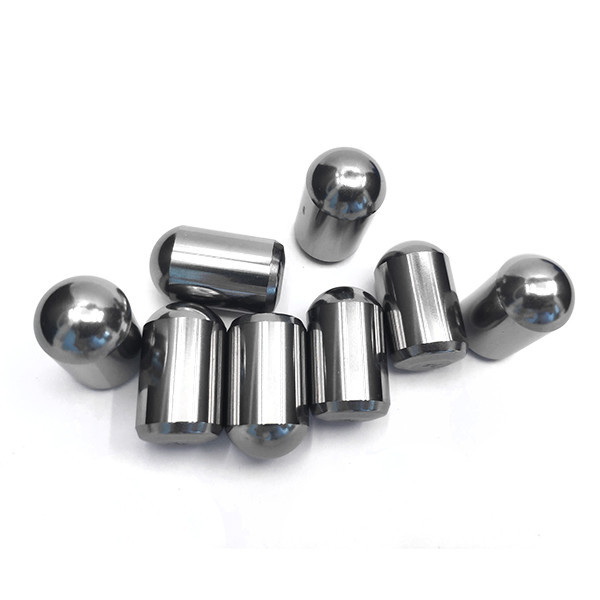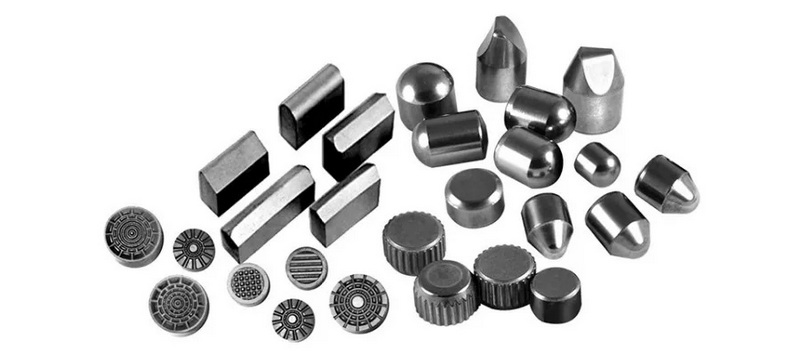Content Menu
● Introduction to Ceramics and Tungsten Carbide
>> Ceramics
>> Tungsten Carbide
● Key Differences Between Ceramics and Tungsten Carbide
>> Composition
>> Hardness and Wear Resistance
>> Thermal Conductivity
>> Chemical Stability
>> Applications
● Applications of Ceramics and Tungsten Carbide
>> Ceramics in Industry
>> Tungsten Carbide in Industry
● Choosing Between Ceramics and Tungsten Carbide
● Advanced Applications
>> Ceramics in Biomedical Applications
>> Tungsten Carbide in Nuclear Applications
● Environmental Impact
● Cost Considerations
● Future Developments
● Conclusion
● FAQ
>> 1. What is the primary advantage of tungsten carbide over ceramics?
>> 2. Are ceramics more brittle than tungsten carbide?
>> 3. Which material is better for thermal conductivity?
>> 4. Is tungsten carbide heavier than ceramic?
>> 5. Can both materials be used in jewelry?
● Citations:
When considering materials for various applications, from industrial tools to personal accessories like wedding rings, two materials often come into focus: ceramics and tungsten carbide. Both materials have unique properties that make them suitable for different uses. In this article, we will explore the differences between ceramics and tungsten carbide, discussing their composition, properties, and applications to help you decide which is better suited for your needs.

Introduction to Ceramics and Tungsten Carbide
Ceramics
Ceramics are a class of inorganic, non-metallic materials known for their high melting points, strong chemical bonds, and brittle nature. They are composed of metallic and non-metallic elements bonded through ionic or covalent bonds. Common types of ceramics include aluminum oxide (Al2O3), silicon carbide (SiC), silicon nitride (Si3N4), and zirconia (ZrO2). Ceramics are widely used in industries such as aerospace, electronics, and automotive due to their excellent thermal conductivity and chemical stability.
Ceramics are versatile and can be crafted into various forms for different applications. For instance, in the aerospace industry, ceramics are used in components requiring high thermal resistance and chemical stability, such as rocket nozzles and heat shields. In electronics, they are employed in substrates and components due to their excellent electrical insulation properties, making them ideal for high-frequency applications. In the automotive sector, ceramics are utilized in engine components and brake pads for their durability and thermal conductivity, enhancing vehicle performance and safety.
Tungsten Carbide
Tungsten carbide is a hard and dense material formed by combining tungsten and carbon. It is renowned for its exceptional hardness, wear resistance, and toughness. Tungsten carbide is commonly used in cutting tools, mining machinery, and industrial applications where durability and resistance to wear and corrosion are crucial. Its robustness and longevity make it a preferred choice for demanding environments.
Tungsten carbide is often used in drill bits due to its hardness and wear resistance. This makes it ideal for drilling through hard materials without significant wear on the tool. Additionally, tungsten carbide is popular in wedding bands for its strength and weight, providing a durable and stylish option for couples.
Key Differences Between Ceramics and Tungsten Carbide
Composition
- Ceramics: Typically composed of elements like aluminum, zirconium, or silicon.
- Tungsten Carbide: Consists of tungsten and carbon, often with a metallic binder like cobalt.
Hardness and Wear Resistance
- Tungsten Carbide: Exhibits exceptional hardness and wear resistance, making it ideal for high-stress environments.
- Ceramics: While hard, ceramics are generally less wear-resistant than tungsten carbide but offer superior chemical stability.
Thermal Conductivity
- Ceramics: Often possess excellent thermal conductivity, suitable for applications requiring heat dissipation.
- Tungsten Carbide: Has lower thermal conductivity but excels in wear resistance and thermal stability.
Chemical Stability
- Ceramics: Show superior chemical stability and resistance to corrosive environments.
- Tungsten Carbide: Generally resistant to chemical attack but may be susceptible to certain corrosive agents.
Applications
- Ceramics: Used in aerospace, electronics, and automotive industries.
- Tungsten Carbide: Commonly used in cutting tools, mining machinery, and industrial wear parts.

Applications of Ceramics and Tungsten Carbide
Ceramics in Industry
Ceramics are versatile and find applications in various sectors:
- Aerospace: Used in components requiring high thermal resistance and chemical stability, such as rocket nozzles and heat shields.
- Electronics: Employed in substrates and components due to their excellent electrical insulation properties, making them ideal for high-frequency applications.
- Automotive: Utilized in engine components and brake pads for their durability and thermal conductivity, enhancing vehicle performance and safety.
Tungsten Carbide in Industry
Tungsten carbide is renowned for its durability and wear resistance:
- Cutting Tools: Used in machining operations for its hardness and ability to withstand high stress, significantly extending tool life.
- Mining Machinery: Employed in wear parts for its exceptional wear resistance, reducing maintenance costs and downtime.
- Jewelry: Used in wedding bands for its hardness and durability, providing a stylish and long-lasting option for couples.
Choosing Between Ceramics and Tungsten Carbide
The choice between ceramics and tungsten carbide depends on the specific requirements of your application:
- For High Wear Resistance: Tungsten carbide is ideal due to its exceptional hardness and durability.
- For Thermal Conductivity and Chemical Stability: Ceramics are preferred for their excellent thermal properties and resistance to corrosive environments.
Advanced Applications
Ceramics in Biomedical Applications
Ceramics are increasingly used in biomedical applications due to their biocompatibility and durability. For instance, ceramic implants are used in orthopedic surgery to replace damaged joints. Additionally, ceramic coatings are applied to medical devices to enhance their wear resistance and reduce the risk of infection.
Tungsten Carbide in Nuclear Applications
Tungsten carbide is being explored for use in nuclear reactors due to its high melting point and resistance to radiation damage. This could potentially improve the safety and efficiency of nuclear power generation.
Environmental Impact
Both ceramics and tungsten carbide have environmental considerations:
- Ceramics: Generally, ceramics are environmentally friendly as they are non-toxic and can be recycled. However, the production process may involve energy-intensive steps.
- Tungsten Carbide: The extraction of tungsten can have environmental impacts, such as soil pollution and water contamination. However, tungsten carbide's durability reduces the need for frequent replacements, potentially lowering overall environmental impact.
Cost Considerations
The cost of ceramics and tungsten carbide can vary significantly based on their applications and production processes:
- Ceramics: Generally less expensive than tungsten carbide, especially for large-scale industrial applications.
- Tungsten Carbide: More costly due to the high cost of tungsten and the complex manufacturing process, but its durability often offsets these costs over time.
Future Developments
Both ceramics and tungsten carbide are undergoing continuous research and development to enhance their properties and expand their applications:
- Ceramics: Advances in nanotechnology are improving the mechanical properties of ceramics, making them more versatile for high-tech applications.
- Tungsten Carbide: Efforts are focused on improving its thermal conductivity and reducing production costs to make it more competitive in a wider range of applications.
Conclusion
In conclusion, both ceramics and tungsten carbide have unique properties that make them suitable for different applications. Ceramics excel in thermal conductivity and chemical stability, while tungsten carbide offers exceptional hardness and wear resistance. Understanding these differences is crucial for selecting the right material for your needs.

FAQ
1. What is the primary advantage of tungsten carbide over ceramics?
Tungsten carbide's primary advantage is its exceptional hardness and wear resistance, making it ideal for high-stress environments.
2. Are ceramics more brittle than tungsten carbide?
Yes, ceramics are generally more brittle than tungsten carbide, making them susceptible to chipping or fracturing under certain conditions.
3. Which material is better for thermal conductivity?
Ceramics generally possess better thermal conductivity compared to tungsten carbide, making them suitable for applications requiring effective heat dissipation.
4. Is tungsten carbide heavier than ceramic?
Yes, tungsten carbide is significantly heavier than ceramic due to its high density.
5. Can both materials be used in jewelry?
Yes, both materials can be used in jewelry. Tungsten carbide is popular for its hardness and durability, while ceramic is valued for its lightweight and aesthetic appeal.
Citations:
[1] https://grafhartmetall.com/en/what-is-the-difference-between-ceramics-and-tungsten-carbide/
[2] https://www.linde-amt.com/resource-library/articles/tungsten-carbide
[3] https://www.ipsceramics.com/tungsten-carbide-metals-and-ceramics-working-as-one/
[4] https://ceramicmanufacturing.net/gallery/
[5] https://create.vista.com/photos/tungsten-carbide/
[6] https://hanoverjewelers.com/blogs/education/tungsten-carbide-vs-ceramic-rings-whats-the-difference
[7] https://www.freepik.com/free-photos-vectors/ceramic-texture
[8] https://www.alamy.com/stock-photo/tungsten-carbide.html
[9] https://sealchina.com/technology-blog/tungsten-carbide-ceramic-is-a-new-kind-of-material-destined/
[10] https://newmanbands.com/tungsten-vs-ceramic-wedding-band/
[11] https://unsplash.com/s/photos/ceramic
[12] https://www.ldsassociados.com.br/news/tools/What-is-the-difference-between-carbide-and-ceramic-inserts.html
[13] https://www.bladeforums.com/threads/ceramic-harder-than-carbide.1396535/
[14] https://theartisanrings.com/pages/ceramic-vs-tungsten-ring-a-comprehensive-comparison-for-smart-choices
[15] https://www.stevengdesigns.com/blogs/news/tungsten-carbide-rings-vs-ceramic-rings-which-is-better
[16] https://www.istockphoto.com/photos/tungsten-carbide
[17] https://www.istockphoto.com/photos/ceramic-material
[18] https://paolaponcenails.com/carbide-or-ceramic-bits
















